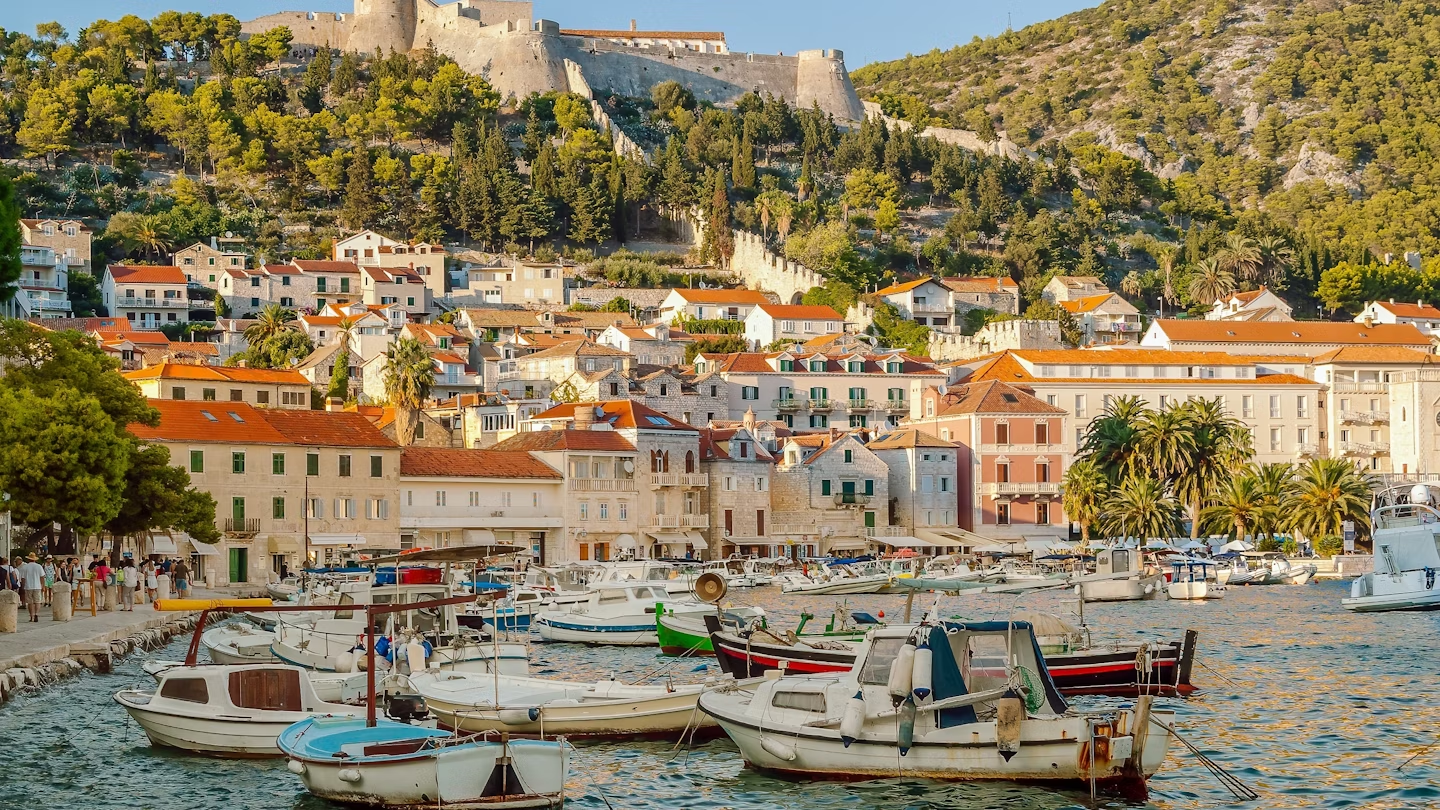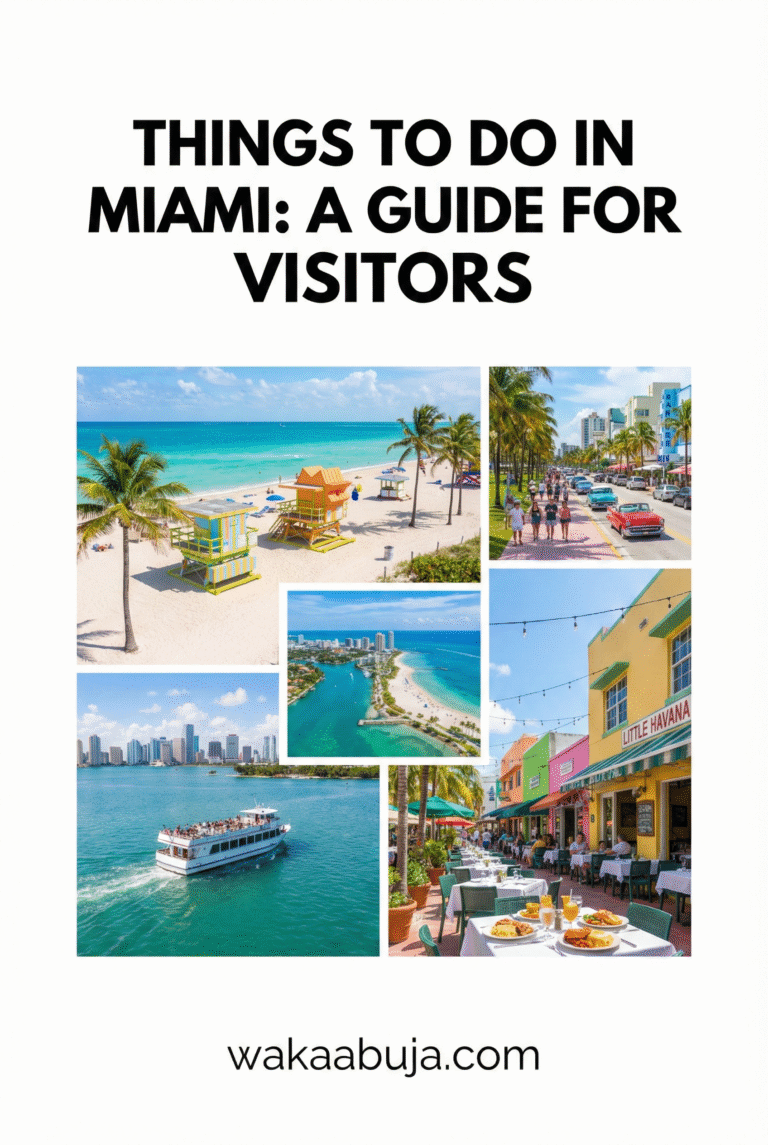- Hvar is Croatia’s sunniest island, famed for crystal-clear waters, lavender fields, and vibrant nightlife.
- Top experiences: exploring Hvar Town’s historic center, visiting Pakleni Islands, and hiking to Sv Nikola summit.
- Best time to visit: shoulder seasons (May-June, September-October) for pleasant weather and fewer crowds.
- Getting there: ferry or catamaran from Split; local taxis, bikes, and boats for getting around.
- Typical budget: mid- to high-range; expect €150–300/night for accommodation and €30–50 for seafood meals.
- Stay safe by following local guidelines, swimming cautiously, and keeping emergency contacts handy.
Introduction to Hvar: A Sun-Soaked Island Paradise
As someone who’s spent considerable time on Hvar, I can confidently say this island is a dazzling blend of sun, sea, culture, and vibrant island life. Nestled in the Adriatic Sea off Croatia’s Dalmatian coast, Hvar boasts over 2700 hours of sunshine annually, making it the sunniest Croatian island.
Its stunning natural beauty, rich history, and buzzing social scene make it a destination that captivates visitors year-round.
How to Get to Hvar
The most common way to reach Hvar is by ferry or catamaran from Split, the nearest major city on the mainland. The journey takes about 1 to 1.5 hours, depending on the vessel. For those who prefer a private transfer or yacht, Hvar Town’s harbor welcomes these options too.
If you’re coming from other Dalmatian ports like Stari Grad or Sućuraj, local ferries connect these points as well.
Getting Around Hvar: Transportation Tips
Hvar is compact but surprisingly diverse. Getting around is easiest by
- Walking: Hvar Town’s historic center is best explored on foot, with charming alleys and waterfront promenades.
- Bicycles and scooters: Renting a bike or scooter is popular for exploring beyond town, including lavender fields and beaches.
- Water taxis and boats: To reach the Pakleni Islands and secluded coves, water taxis depart frequently from Hvar Town’s harbor.
- Car rentals: Useful if you want to explore the island’s interior or visit remote villages.
When to Visit Hvar
While Hvar is a year-round destination, I recommend visiting during the shoulder seasons of late spring (May-June) or early autumn (September-October). The weather is warm and sunny, the sea is still perfect for swimming, and the island is less crowded than in peak summer months.
July and August bring the biggest crowds and highest prices, as locals and tourists flock here for the summer holidays.
Where to Stay on Hvar
Accommodation options range from boutique hotels and luxury resorts to private villas and apartments. For privacy and comfort, I personally prefer renting a villa, especially if traveling with family or friends—it offers space, kitchen facilities, and often better value.
Maslina Resort in Stari Grad is a top-tier hotel option if you prefer a more traditional stay. In Hvar Town, you’ll find charming guesthouses and upscale hotels right by the harbor.
Top Things to See and Do in Hvar
Explore Hvar Town & St Stephen’s Square
Wander the stone-paved streets of Hvar Town, soaking in the Gothic and Renaissance architecture. The centerpiece is St. Stephen’s Square, the largest in Dalmatia, surrounded by cafes, restaurants, and the stunning St. Stephen’s Cathedral. Don’t miss the historic Arsenal, home to the first public theater in Europe (1612).
Visit the Pakleni Islands
Just a 10-minute water taxi ride from Hvar Town, the Pakleni Islands offer secluded beaches, crystal-clear waters, and lively beach bars like Carpe Diem. Perfect for swimming, snorkeling, or just relaxing in nature’s embrace.
Hike to Sv. Nikola Summit
For panoramic views, hike or bike to the 628m peak of Sv Nikola. The trail from the village of Dol takes about two hours and rewards you with breathtaking vistas of the Adriatic, neighboring islands, and even Italy on clear days.
Discover Lavender Fields & Vineyards
Hvar’s fragrant lavender fields bloom in early summer and are a photographer’s dream. Pair this with visits to local winemakers to sample indigenous Croatian wines—a true taste of the island’s terroir.
Experience Nightlife & Dining
As the sun sets, Hvar Town transforms with vibrant nightlife. From sophisticated cocktail bars to beach clubs with world-class DJs, the island pulses with energy. Don’t miss dining on fresh seafood paired with local wines at waterfront restaurants.
Typical Costs & Suggested Budget
Hvar is one of Croatia’s pricier destinations, especially in peak season. Here’s a rough guide based on current prices:
Hotel double room: €300/night (summer)
One-bedroom apartment: €150/night
Villa rentals vary widely but start around €200/night
Seafood main course: €30–50
Pizza: ~€17
Local beer (0.5 L): €5
Cocktails: €12–17
Catamaran Split–Hvar: €25 one-way
Water taxi to Pakleni Islands: €10
Scooter rental: ~€30/day
For a comfortable trip including accommodation, meals, and activities, budget around €100–150 per day per person in the shoulder season and €150–250 in summer.
Money-Saving Tips
- Visit in shoulder seasons to avoid peak prices and crowds.
- Rent a villa or apartment with kitchen facilities to prepare some meals.
- Use local markets for fresh produce and snacks.
- Book ferries and accommodations well in advance for the best rates.
- Walk or rent a bike instead of taking taxis whenever possible.
Staying Safe in Hvar
Hvar is generally very safe, but keep these tips in mind:
- Swim only in designated areas and be cautious of currents.
- Keep valuables secure, especially in crowded nightlife areas.
- Follow local COVID-19 guidelines and health advisories.
- Emergency contacts: Dial 112 for general emergencies; local police +385 21 741 111.
- Pharmacies and medical centers are available in Hvar Town for minor health needs.
Tours and Day Trips Around Hvar
To deepen your experience, consider guided tours such as
- Boat tours to the Pakleni Islands with snorkeling stops.
- Wine tasting tours visiting local vineyards and olive oil producers.
- Historical walking tours of Hvar Town’s fortress and old town.
- Day trips to nearby islands like Brač or Vis.
Recommended Length of Stay
For a well-rounded experience, I recommend spending at least 3 to 5 days on Hvar. This allows time to explore the town, enjoy the beaches, take day trips, and soak in the island’s unique atmosphere without rushing.
Embedded Map: Hvar Town & Surroundings
Personal Insights & Pro Tips
From my time on Hvar, here are some insider tips to elevate your visit:
- Wake early to enjoy the peaceful morning light on St. Stephen’s Square before the crowds arrive.
- Book a sunset visit to the fortress—the views over the harbor and Pakleni Islands are unforgettable.
- Try local specialties like gregada (Dalmatian fish stew) and sip on Hvar’s indigenous wines.
- For a quieter beach day, head east of Hvar Town or to less accessible coves by boat.
- Reserve tables at popular restaurants ahead of time during summer to avoid disappointment.
Frequently Asked Questions (FAQs)
What is the best way to get from Split to Hvar?
Taking a catamaran or ferry from Split harbor is the most convenient and scenic way, with frequent departures daily.
How many days should I spend on Hvar?
Ideally 3 to 5 days to fully enjoy the beaches, town, and nearby islands without rushing.
Is Hvar safe for solo travelers?
Yes, Hvar is generally safe for solo travelers, but standard travel precautions apply, especially at night.
When is the best time to visit Hvar to avoid crowds?
The shoulder seasons of late spring and early autumn offer pleasant weather with fewer tourists and better prices.
Are there family-friendly activities on Hvar?
Yes, beaches with calm waters, boat trips to Pakleni Islands, and exploring historic sites are great for families.
Embrace the island’s slower pace and let yourself get lost in its alleys, sunsets, and sea breezes. Hvar’s charm lies in its blend of natural beauty, history, and warm hospitality—a place you’ll want to return to again and again.




